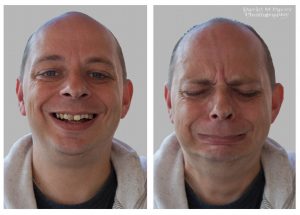
Recovery has become a hotly contested concept in UK mental health circles, with the potential to liberate and enrage in roughly equal measure. It is perhaps a mark of the extent to which recovery has moved from the margins to the mainstream of dialogue that there is now an active anti-recovery movement, concerned with what is seen as the professional appropriation of a concept borne out of the frustration of people in receipt of services that were insufficiently concerned with personally defined recovery.
A scan of the previous Elf blogs about recovery also speaks to a tension. You can variously read about the interaction between risk, relationships and recovery, the effectiveness of recovery training, the role of care planning and the differing interpretations of the term. All interesting and important subjects, but all concerned with recovery in the world of services. Conversely we can identify one review of personal recovery. This lack of balance in the application and interpretation of a profoundly personal experience to policy and practice features in the findings of a helpful new review of personal recovery.

Conversations about mental health recovery: engaging or enraging?
Methods
A method known as best-fit framework synthesis was used to assess the extent to which the literature identified in the review was accommodated by the pre-existing CHIME conceptual framework (Leamy M. et al, 2011). CHIME stands for the recovery supporting elements of:
- Connectedness,
- Hope and optimism,
- Identity,
- Meaning in life and
- Empowerment.
It was developed through a previous review of literature it has been widely applied in a range of settings.
PsycINFO, Medline, Embase or the Joanna Briggs Institute database were searched. Data reviewed were the results sections of the identified papers with line by line coding against the CHIME elements. Where new codes were identified these were grouped under newly generated themes. Only peer reviewed articles written in English which were concerned with the analysis of primary data about personal experiences of recovery were included. Quality was reviewed against published guidelines.
A broad set of search terms were applied across four electronic databases initially generating close to 3000 papers. Through a review of titles and abstract, and then full texts, this was whittled down 15 studies. Three additional papers identified through hand searching led to a final total of 18 papers included in the review.
Results
CHIME themes accounted for 68% of the data reviewed. The remaining 32% of data were included within four additionally generated themes. These were:
- Difficulties;
- Therapeutic input;
- Acceptance and mindful awareness; and
- Returning to, or desiring, normality.
Conclusions
The authors conclude that the CHIME framework was insufficiently broad to capture the breadth of recovery experiences assessed in their review and that its expansion should be considered to inform a fuller understanding. They argue CHIME is an over optimistic view of recovery, which fails to acknowledge the considerable challenges inherent in living with and overcoming mental distress:
The simple expansion of the CHIME model of recovery into CHIME-D, more explicitly acknowledging Difficulties, might be a small step towards this end.
Many of these difficulties are underpinned by social inequality and the authors make a strong case for researchers and practitioners to be more concerned not just with understanding these realities, but also with actively challenging them.

One third of the data identified by this review did not fit the existing CHIME framework.
Strengths and limitations
This is a rigorous review which clearly described the methods applied to assess the identified papers. The application of a robust quality assessment process was also clearly described; highlighting concerns about the quality of a number of included studies and indeed leading to the omission of three papers. This level of rigour is to be commended in academic terms, but nods to another of the tensions in recovery research and promotion which the authors do acknowledge. Put simply a great deal of what we understand about lived experiences of recovery never gets near academic publication. The authors suggestion that researchers should be aware of their privilege in generating knowledge about recovery feels slightly hollow in the context of a review of which was solely concerned with knowledge shared in high quality research papers published in peer reviewed journals. However, as the authors note reviewing non published literature on recovery experiences is a considerable task, beyond the scope of this review and subject to other limitations and biases.
A central criticism of the CHIME conceptual framework from this review is that it fails to adequately take account of the problems and difficulties that can impede recovery, but it is not clear that this was the intention of researchers who developed that framework. Leamy and colleagues reviewed a broader set of literature than was included in this review to: “synthesise published descriptions and models of personal recovery into an empirically based conceptual framework” (Leamy M. et al, 2011, p. 445). That is somewhat different from constructing a framework of elements which help and hinder the process of recovery, which seems to have been the intention of the authors of this review. Perhaps then it is not too much of a surprise that the best fit framework didn’t fit terribly well?
The authors suggest a criticism of qualitative research is that it can be hard to generalise results to the wider population of interest. Meta-synthesis of qualitative studies can to some extent address this criticism by describing results across a wider set of participants and the authors have done an excellent job in that respect. However, this type of synthesis can come with its own problems, not least because the unit of analysis is the results section of papers and not the original research data. These results sections are themselves the products of the original researchers own subjective interpretation and bias and subject to the requirements and interests of different journals.

A great deal of what we understand about lived experiences of recovery never gets near academic publication.
Implications
The promotion and research of recovery is by the very nature of the concept at hand positively oriented. Few researchers with an interest in recovery start with the question: ‘What has stopped you getting better?’ However, as the researchers who undertook this review note, a concern for what has helped recovery should not occur at the expense of an interest in the factors which may get in its way. This review provides a useful wake-up call to recovery enthusiasts and researchers to more fully take account of a broader set of experiences when justifying the application of recovery values. The truth is that as recovery has become part of the language of mental health policy and practice it has been used to justify a broad range of often contradictory actions. I’m thinking, for example, of the day service that is considered a lifeline for recovery by the people who attend but is threatened with closure on the grounds that it’s not being sufficiently recovery-oriented, or recovery being the justification for quickly discharging people from support that they consider central to their recovery.
Despite these challenges, in my view, it’s way too soon for recovery to be consigned to the rubbish bin, but there’s certainly work to be done to inform a fuller understanding and avoid charges of Pollyannaism. Much good has come of recovery and we should be wary of distancing ourselves too much from a concept that has for many reignited a sense of hope and possibility. One aspect of the development of the recovery movement which is often overlooked was the role of longitudinal research in helping us better understand that people, primarily with a diagnosis of schizophrenia, could in fact recover at all. The work of Courtenay Harding and other researchers internationally (Harding et al, 1987) reminded us that, while recovery is not necessarily easy or quick, it can and does happen. That’s a message we must hold on to as we seek to more fully inform our understanding of recovery.

Let’s not forget, recovery can happen, but it’s often a long hard slog up a steep hill.
Conflict of interest
Simon Bradstreet was Director of the Scottish Recovery Network for 12 years.
Links
Primary paper
Stuart SR, Tansey L, Quayle E. (2016) What we talk about when we talk about recovery: a systematic review and best fit framework synthesis of qualitative literature. Journal of Mental Health, Early online 1-14. [Abstract]
Other references
Leamy M, Bird V, Le Boutillier C, Williams J, Slade M. (2011) Conceptual framework for personal recovery in mental health: systematic review and narrative synthesis. The British Journal of Psychiatry : The Journal of Mental Science, 199(6), 445–52.
Harding CM, Brooks GW, Ashikaga T, Strauss JS, Breier A. et al (1987) The Vermont longitudinal study of persons with severe mental illness: I. Methodology, study sample, and overall status 32 years later. American Journal of Psychiatry 144(6): 718-726.

Recovery review highlights rhetoric-evidence gap: does that CHIME with you? https://t.co/Mh4TS9HlQS
Today @SimonMHR on a systematic review of #recovery that’s a wake-up call to enthusiasts & researchers https://t.co/ZUBmdyu4ME
@Mental_Elf @SimonMHR not a wake up call as there seems to be consensus – recovery is personal ie individual. No. Social not equal ‘context,
@DianaRose160 @Mental_Elf or perhaps both personal and social (like most things involving us people)
@DianaRose160 @Mental_Elf @SimonMHR So why do we accept peer as a commonality.
@Mental_Elf @SimonMHR another recovery based post, this is very interesting stuff #recovery #dissertation #psychology #research
@malcolmclayton @Mental_Elf thank you. Glad you find it helpful
@SimonMHR @Mental_Elf useful background for my dissertation on how alcohol workers construct recovery with their SU
Recovery review highlights rhetoric-evidence gap: CHIME with you? https://t.co/XnAcuTZFZV
Recovery review highlights rhetoric-evidence gap: does that CHIME with you? https://t.co/2UWScWJl2s via @sharethis
Recovery review highlights rhetoric-evidence gap: does that CHIME with you? https://t.co/TsWIEIJhoc via @sharethis
Useful debate about how we conceptualise ‘recovery’ in #mental #health . #recovery https://t.co/VyIL1ZGAes
#Recovery review highlights rhetoric-#evidence gap: does that CHIME with you? https://t.co/jQ4iMCcwtY from @Mental_Elf #mentalhealth
Let’s not forget,
#Recovery can happen,
But it’s often a long hard slog up a steep hill
Read @SimonMHR… https://t.co/DVWCuAOHpH
@Mental_Elf @SimonMHR Well that image took me back to school PE and cross country-thankfully hasn’t put me off reading!!!
@LesleySRN @Mental_Elf that’s a relief – would be interested in your thoughts
@Mental_Elf @SimonMHR interesting read.
@elsiexzero @Mental_Elf thank you Lisa
@Mental_Elf @SimonMHR It certainly can be so Simons review ‘chimes’ with me and why I also like to use @RITB_ Unrecovery Star. Think we do
@Mental_Elf @SimonMHR @RITB_ need to talk more about and allow others to talk about challenges and impacts outwith our direct control. Can
@Mental_Elf @SimonMHR @RITB_ be very frustrating when talking ‘recovery’ means people are not truly listened to /understood due to a
I have never been convinced by the separation of clinical and personal “recovery” as separate entities and think it adds to the confusion. For me “recovery” is the process unique to the individual but with themes eg hope, the clinical side ie interventions and symptom focus may or may not be helpful but can be a distraction.
Good point. I do wonder if that separation was created in recognition of the gap between personal and clinical interpretations and understandings of recovery.
I think it would have been better to perhaps use a different name to make that clearer, I think it also has consequences for research etc. as the idea of clinical recovery lends itself to the ideas of RCT’s, nearly wrote RTA’s, where as the concept and experience of personal recovery is very different and needs an alternative approach.
There is an excellent book chapter on this very subject by Mike Slade. He talks about the important distiniction between nomothetic and idiographic knowledge in recovery. Pleased to discover it’s available on google books: https://books.google.co.uk/books?id=2D5TAvLmUqAC&pg=PT70&dq=nomothetic+and+idiographic+knowledge+slade&source=gbs_toc_r&cad=4#v=onepage&q&f=false
Good point. I do wonder if that separation was created in recognition of the gap between personal a… https://t.co/5z2jVF4UTC
RT @Mental_Elf: A great deal of what we understand about lived experiences of #recovery never gets near academic publication https://t.co/Z…
https://t.co/WBaEacnJNz
This a good read. At least we have an evidence base to discuss but it is all about adults under 65 years of age. We don’t have an evidence base for older people and recovery, only Daley et al 2013 who raise enough issues to show that we need much more.
Excellent point Elizabeth. Same can also be said for the dearth of evidence in relation to younger people and recovery as well as for people from minority backgrounds.
RT @MHlatelife: Recovery review highlights rhetoric-evidence gap: does that CHIME with you? https://t.co/WP5nbPLjNP via @sharethis
Recovery review highlights rhetoric-evidence gap: does that CHIME with you? https://t.co/XsNtNWtAqI by @SimonMHR
Don’t miss:
Recovery review highlights rhetoric-evidence gap
Does that CHIME with you?
https://t.co/ZUBmdyu4ME https://t.co/osvskpRubE
Interested in your views on my blog for @Mental_Elf on an important new review of #recovery evidence https://t.co/Oa1i6L5R1z
Interesting new evidence review reveals telling gap: personal experiences of #Recovery #mentalhealth https://t.co/8zHBIiJSkJ via @sharethis
What is #Recovery? @Mental_Elf has an excellent post examining this issue https://t.co/1d9hJ498VJ
Limitations? Yes! But let’s not forget how much of an improvement CHIME is over IAPT’s concept of “recovery”.
[…] changes been helpful to people in receipt of them? I’ve written previously in the woodland about the gap between rhetoric and evidence to support recovery approaches. How can we start to bridge that […]